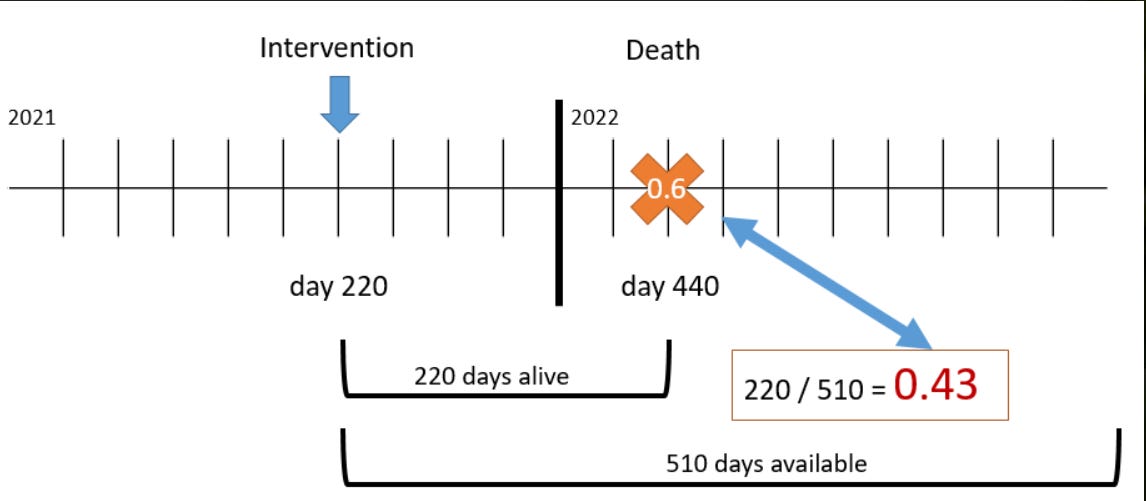Response to Kirsch's "Most important article of my life"
"People are saying nonsense just for attention" (Igor Chudov)
This post was prompted by Sasha Latypova’s recent article (with a lot of strong language directed at Robert Malone) as well as by Igor Chudov’s tweet, which resonated with me strongly.
I admire both of them for sharp and well articulated points, but Igor especially for his seeming willingness to be proven wrong and course correct when evidence presents itself accordingly, which is an extremely rare quality.
I despise charlatans, especially in medicine, who sale panacea to desperate people willing to pay anything just for a glimpse of hope. I was personally harmed in the past by those who scavenge on other’s suffering and death - not that I was unsuspicious of the scam but, nevertheless, went along with it just for that “what if” hopeful thought.
The global vaccination scam, commonly known as “COVID-19 pandemic”, unearthed a host of government hoaxes which immensely expanded “conspiracy theorists” circles and blurred their boundaries. While those snake oil salesmen have always been out there, the murky “I told you so” environment of overwhelming mistrust to official narratives now created a cesspool for charlatans of all shapes and sizes.
Among those, unfortunately, are people who gained trust and popularity among gullible “untivaxers” by debunking myths of the “safe and effective”. Perhaps starting off with earnest intentions, but then turning into populists and sensationalists who attract subscribers and conference attendees through all means possible, including sheer garbage.
People get spoiled by fame and money easily, and they want more and more of that. A Twitter junky would “innocently” pass around a fake picture without checking its sources - just to solicit more views and followers, but the BS in circulation gets to new levels if people like Robert Malone, who is still under contracts with the US Government, the DOD and DTRA, or Peter McCullough, who helps sell Spike detox remedies (not that there is anything fundamentally wrong with either), go off professional rails in appeasing and potentially taking advantage of the naive crowd hungry for sensations and easy solutions.
One way to spot those presumptuous and potentially dangerous personas is to see if they ever admit to mistakes or happy to take in and respond to criticism (hence my respect for Igor Chudov).
So, here’s my personal encounter with Steven Kirsch whom I no longer trust and consider to be a saboteur to the otherwise well-founded anti-vaxx movement. Kirsch is not interested in truth - he is in search of cheap popularity, sensationalism and endorsement. Whatever valid points he brings, they are to entice more people into the ranks of his subscribers, so that he could push more nonsense.
On Mon, 30 Jan 2023 at 02:09, Steve Kirsch wrote to me:
I wrote this article:
I’m pretty sure there are no holes in it and the result is valid despite the “claims” it is biased sample.
Yeah, I definitely agree that people who responded to the survey are smarter and more red pilled, but they don’t get to choose the characteristics of their friends who die. So I don’t think claims of biased sample are material.
My claim is this is solid work and that anyone attacking it is disingenuous.
I’d love to get your opinion before I push this out to my followers!
Just let me know via return email with this subject line.
On Sat, 4 Feb 2023 at 21:10, I wrote:
Hi Steve,
Sorry for a bit tardy response. I wish you had prompted me a bit earlier, prior to publishing your analyses.
Before looking into this from the data science perspective, I'd like to point out what I believe to be a serious methodological (math) flaw with your approach, related to shrinking the date range for the vaccinated, which affects the ratio in the direction of what you've observed as "shortening the life".
But before I elaborate, are you still open to feedback, or perhaps, already considered that observation from someone else?
CC'ing Stephen as he helped me to reach out to you on this matter (thank you, Stephen!).
Cheers,
I received no response and decided to elaborate on my position, so
On Thursday, February 9, 2023 9:39 AM I wrote:
The easiest way to demonstrate the flaw:
For no apparent reason John Doh died on March 16th 2022 (day 440), which rates his survival rate within the 2021-22 deaths cohort at 0.6 (not bad!)
Someone makes a claim that watching "The Demolition Man" movie shortens lives
John Doh watched the movie on August 8th 2021 (day 220)
By measuring the survival rate from that point, John's is now at 0.4, which is lower than expected 0.5
Such alarming statistics are observed for those who watched the movie and then died in 2021-2022, averaging at ~0.31 rate.
We should ban "The Demolition Man" (or not?)
More sciency explanation with a bit of modelling:
Assuming (for simplicity) the constant rate of daily vaccination among those left unvaccinated,
The sample size in the model below is 2000, but it does not matter, as the same behaviour would be observed for any arbitrary sample size.
Due to the selection bias (only those who vaccinated and died in 2021-22), the population of the vaccinated reaches half of its total sample size around day 200 (the actual day depends on the arbitrary cut-off that has to be made because of the asymptotic nature of the "vaccinated" function)
Because of such dynamics, the average date for ANY arbitrarily chosen intervention is shifted "left", and hence when the rate is measured by your formula, it gets offset to the left from 0.5
I am not sure if it is reflected in your survey, but the vaccination rate was not constant (as in my simple modeling) but likely higher in 2021, which makes the "left shift" even bigger, having nothing to do with the actual survival.
This does not prove that the vaccine does not shorten lives, but that the survival rate you suggested is not the right measure to assess it or at the very least should not be compared with 0.5
Python code that demonstrates the above:
import pandas as pd, math
import matplotlib.pyplot as plt
period=730 # dqys (Jan 1, 2021 to Dec 31, 2022 )
sample = 20000 # number of individuals vaxxed and then died in the period. 100 is for convenience to interpret the results as %
# share of unvaccinated who vaccinate on a given day (on average)
# the rate that allows to reach 100% vaccination for everybody by the end of the period
daily_vax_rate = 2.6/period
# share of people from the total sample who die daily (on average)
daily_death_rate = 1/period
df=pd.DataFrame(columns = ['alive', 'vaccinated'],index = range(period))
df.loc[0]=[sample,0]
for i in range(1,period):
df.loc[i,'alive']=df.shift().loc[i,'alive'] - sample*daily_death_rate
# rounding up to a whole person to avoid running into asymptotic infinity
vaxxed = math.ceil((sample - df.shift().loc[i,'vaccinated'])*daily_vax_rate)
df.loc[i,'vaccinated']=df.shift().loc[i,'vaccinated'] + vaxxed
df.plot(figsize=(20,10))How your experiment can be adjusted:
I think you can still do the ratio comparison, but you have to compare vaccine intervention with placebo intervention (e.g. watching "The Demolition Man") in a large enough random sample of people who did either but not both.
Cheers,
On Thu, 9 Feb 2023 at 12:47, Steve Kirsch wrote:
Not convincing at all
If you pick any arbitrary date, the ratio is .5
I’ve done this.
On Thu, Feb 9, 2023, 13:01 I wrote:
Hi Steve,
You can't say "It's not convincing" . It is either correct or it is not. And if it's not, then where?
The logic and modelling lands on circa 0.3 ratio without any assumption of harmfulness. I am not advocating for "safe and effective" (quite the opposite). But your approach is flawed. I can do more sophisticated math with a big polynomial function, but there is no need to do it - just look at the graph.
You have to compare suspect intervention with placebo intervention - that's how studies are done (e.g. RCT). Otherwise, it's not apples to apples.
I am trying to help you, Steve. If I am wrong I'll admit. Will you?
Cheers,
I haven’t heard back from Steve since, but still
On Sat, Feb 11, 2023, 23:05 I wrote:
Here is an even simpler explanation why your methodology is flawed.
I give you two sets of death dates for 2021-22: One has those who were vaccinated during that period, and another one of those unvaccinated. I don't tell you which one is which. Now, can you tell me which one is vaxxed and which one is not? If your answer is: "I need to know the vaccination dates in order to make the distinction" then you already know your method does not work.
And here's the picture of the vaccination dynamics in your survey:
We reach 50% vaccinated by ~ 9th July. Based on that date, the ratio is 0,324. Is it merely a coincidence with your results? Do you see how the shape of your actual survey results is similar to what I modelled and presented to you earlier?
Just trying to help you, Steve, as everything else you bring up seems sound. I know that you consider this ratio experiment one of the most important things that you did. Especially because of that, you don't want to be wrong. The sooner you look into this, the less embarrassment you might face later.
If you think I am wrong, you really need to tell me where for your own sake.
Sincerely,
P.S.
I made a mistake earlier stating that "shifting left" lowers the ratio. It's the opposite. But it does not change how the ratio should be interpreted and how it is not indicative of a shortened life. You need to give the vaccinated the whole two years range. Then you might be onto something (maybe).
On Wed, 15 Feb 2023, 18:49 I wrote:
Hi Steve,
You asked me to help. I did.
Your method reflects the dynamics of the vaccination (or any intervention) - not its harm. It is as clear as the fact that COVID vaccines are at best useless.
If you are a truth seeker, as you claim, you will overcome your confirmation bias and reassess your methodology respectively to regain and bolster my respect for you and your efforts.
As confident as I am in what I stated about your ratio approach, I remain open to being proven wrong about my assessment or perhaps misunderstanding your formula. But if I don't hear from you, I am assuming the worst - that you use dishonesty to advance your goals. Your call.
Regards,
That’s the end of the story. Nobody ever heard of this sensational method that Kirsch called “Most important article of my life"since, besides some lady from “Heart” (as per Kirsch anyway). Steve also has a buddy from UK, Professor Norman Fenton, who does all the 5th grade math validations and endorsement for Kirsch (always favourably it seems with some minor corrections) as well as appointed to judge challenges to Kirsch’s devices.
Judging by the poll Steve offered to his followers, the Kirsch’s bubble loves those types of sensations - no wonder Kirsch gladly spins them off.









